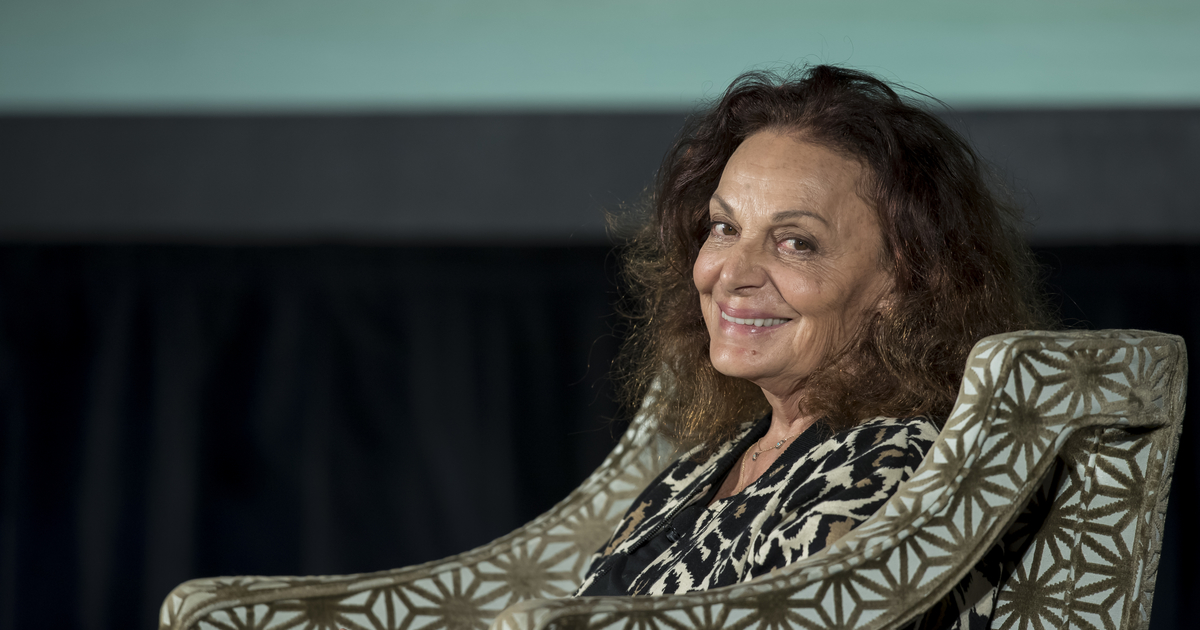Entrepreneurial Wisdom from Diane von Fürstenberg

On a recent September evening in Copley Square, Boston, fashion designer, philanthropist and Founder and Chair of DVF, Diane von Fürstenberg sat down to speak with former Babson College President Kerry Healey to discuss life, work, and entrepreneurship.
The conversation was part of The Academy of Distinguished Entrepreneurs® (ADE) Global Gala and Summit commemorating Babson’s 100 years of entrepreneurial leadership.
Offering insights from her career, tips for the up and coming, and a feminist-entrepreneurial angle that ignited the audience, von Fürstenberg did not disappoint.
On Winning Awards
Von Fürstenberg, the first woman to be inducted into The ADE, back in 1979, reflected in a way that exuded a relaxed confidence.
“I had come from Europe, and started a business, and was very, very successful—very, very young—before I was 30,” said von Fürstenberg.
“I was the youngest, and the first woman, and I got this award. But, now I know that the award only existed for two years, so that’s not such a big thing,” said von Fürstenberg with a smile.
It’s Your Door
As she answered questions from Healey, von Fürstenberg’s life story emerged. She grew up in Belgium, went to boarding school in Switzerland, and started a company in the United States in her early 20s.
Von Fürstenberg had the opportunity to travel to Italy with a friend whom she met while working for a photographer’s agent in Paris. Her friend said, “Come see the other side. Come see where we make things.” And, off she went.
“When you start, you don’t really know which is going to be your door. And, sometimes your door—the door of your future—isn’t always the most glamorous, but it’s your door,” said von Fürstenberg.
Luck and Coincidence
While in Italy, von Furstenberg witnessed the generations-old family businesses that fueled the fashion industry. Her friend, whose factory printed the fabrics, needed more space.
Chance would have it that the factory next door was shutting down—they had been making stockings at the time that pantyhose were emerging.
Von Fürstenberg’s friend bought the factory next door and started experimenting with the machines that had been left behind. Through trial and error, using thicker fabrics, he invented the jersey—the use of a knitted, not woven, fabric used to make popular garments.
At around this same time, von Fürstenberg traveled to New York to visit her boyfriend from college. After a month, she returned to the factory in Europe having determined two things: she knew she wanted to remain in America, and she knew there was an idea forming.
“Maybe there’s something for me to do here,” said von Fürstenberg. “Maybe I could make samples in this factory and try to sell them in America,” she said.
A fashion icon was born.
Rapid Success and Lessons Learned
Von Fürstenberg worked with a sense of purpose, and was a success from the very beginning.
“I grew up not really knowing what I wanted to do, but I knew the kind of woman that I wanted to be,” said von Fürstenberg. “I wanted to be a woman in charge. I wanted to have a man’s life in a woman’s body.”
By the time she was 28, she had been on the cover of Newsweek and The Wall Street Journal. “I had become an entrepreneur,” said von Fürstenberg. “I didn’t know what entrepreneur meant, but I was an entrepreneur.
“One of the things I tell people is that almost all successful people feel like a loser at least once a week,” she said. “And, I think it’s important for people to know that because that’s also one of the things that motivates you.”
She continued this line of reasoning with a reality check for the budding entrepreneurs in the crowd. “You just don’t keep on climbing,” she said. “You go through all sorts of ups and downs, successes and failures.
“In the same way that when you’re up at the top of your success, acclaimed and all, people think that you are at the top—but you yourself know that it’s not so good because you are going through difficulties,” she said. “And, in the same way, when people think it’s over—you know that’s also not true because you are already climbing back up.”
Posted in Entrepreneurial Leadership





